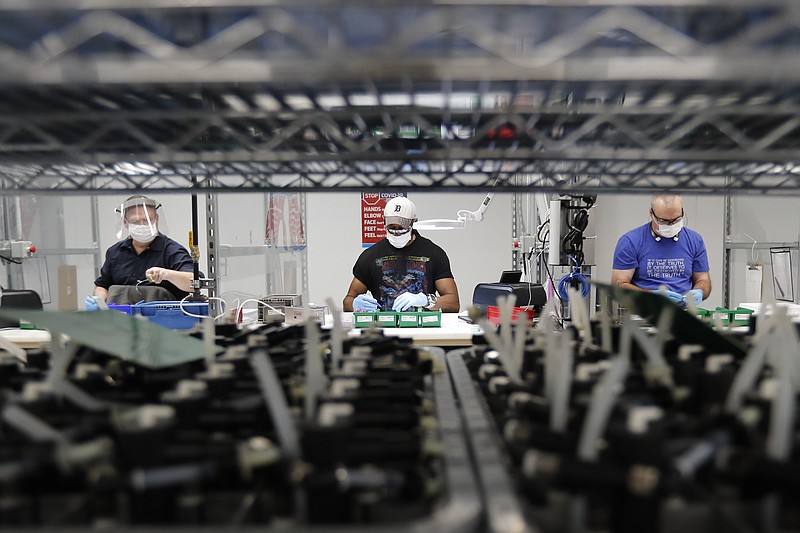SILVER SPRING, Md. -- U.S. industrial production rose 1.6% in December, a third straight monthly gain, but it is still below its pre-pandemic level.
The December gain in industrial output followed a 0.5% increase in November and a 1% increase in October, the Federal Reserve reported Friday. Even with those gains, industrial output is still about 3.3% below its level in February before the pandemic hit.
Manufacturing increased 0.9%, its eighth straight monthly gain, even as production of motor vehicles and parts declined 1.6%. That follows a string of gains for the auto sector, including November's strong 5% increase. Without the drag in the auto sector last month, manufacturing posted gains of 1.1%. Manufacturing payrolls increased by 38,000.
An annualized 11.2% increase in fourth-quarter manufacturing production shows factory activity continues to steadily rebound. A slowly improving economy, still-lean inventories and prospects for stronger growth this year should continue to support the industry this year after the pandemic caused factory output to decline 6.9% for all of 2020.
[CORONAVIRUS: Click here for our complete coverage » arkansasonline.com/coronavirus]
The gain in factory output was broad, reflecting improvement in production of consumer goods, business equipment and construction supplies.
Manufacturing capacity utilization rose to 73.4% from 72.7%.
Total industrial capacity utilization, including factories, mines and utilities, increased to 74.5% from 73.4%. The industrial plant-use rate has improved but remains below the 76.9% seen last February.
Mining production rose 1.6% in December, while utilities' output rose 6.2% as a rebound in December demand followed a 4.2% decline in November because of unseasonably warm weather.
While December's top-line numbers were better than economists had expected, there is concern that rising coronavirus infections and a rocky vaccination campaign could further hamstring an already uneven recovery for the U.S. economy.
A separate Commerce Department report released Friday showed disappointing retail sales for December.
On Thursday, President-elect Joe Biden unveiled a $1.9 trillion coronavirus plan that would speed up vaccines and provide financial help to those struggling with the pandemic's prolonged economic fallout.
Oren Klachkin, an economist with Oxford Economics, said a financial relief package would provide a much-needed immediate boost for the economy, but added that in the long term, "vaccine roll outs will shift consumer spending more towards services, softening consumer goods demand and weighing on industrial activity."
The Institute for Supply Management reported Tuesday that American factories grew in December at the fastest pace in more than two years. The manufacturing sector has weathered the pandemic better than the battered services sector, but continues to face virus-related headwinds such as factory shutdowns needed to sanitize facilities and difficulties in hiring new workers as the virus surges again.
Information for this article was contributed by Matt Ott of The Associated Press and by Reade Pickert of Bloomberg News (WPNS).
